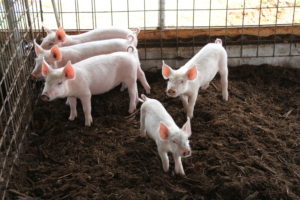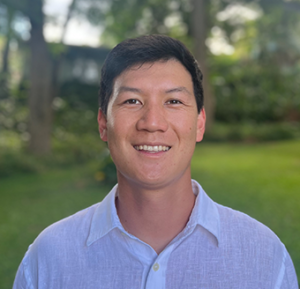We had pretty high expectations.
Michael DuPonte (APL Class VI), the extension agent for the University of Hawai‘i’s College of Tropical Agriculture and Human Resources (CTAHR), could barely contain his excitement over today’s visit to a nearby piggery that utilizes a Korean-based method of managing animal waste.
A method that resulted in an odorless piggery.
Yes, no smell.
It’s mind-blowing, he told us on Thursday. And since then, we’ve been eagerly anticipating this farm visit.
 In 2008 DuPonte had visited piggeries that use this natural farming method created by Master Cho Han — and he was immediately a convert.
In 2008 DuPonte had visited piggeries that use this natural farming method created by Master Cho Han — and he was immediately a convert.
“When I walked in I couldn’t believe it,” he told us. “It was really out-of-the-box thinking.”
Anyone who’s ever visited a piggery knows its distinctly foul smell. But these farms use what’s called indigenous microorganisms — or IMOs — in the soil to break down animal waste naturally, resulting in a lack of smell.
And this second-generation farm in Mountain View, run by Neena Roumell and Atto Assi, also employs what DuPonte referred to as “strategic solar positioning and natural ventilation for drying and cooling.” That helps, too.
 Here’s what this farm does: It has about 18 acres in production, including growing roughly 3,500 palms harvested for its oil. The oil is converted into biodiesel at an on-site plant; the rest of the plant is used to feed the pigs. The animals also feast on grass cuttings, papayas, bananas and sweet potatoes. In addition, the pair devised an inoculated deep-litter floor that actively composts manure and safely processes toxins. Atop the cinder soil here, they’ve added a layer of biochar, then logs, then a green waste layer with IMOs mixed into it. The last step is spraying lactic acid — and that’s it. The litter never needs to be changed — the pig manure is digested by the good bacteria that live in the green waste — and will remain odorless as long as it’s dry.
Here’s what this farm does: It has about 18 acres in production, including growing roughly 3,500 palms harvested for its oil. The oil is converted into biodiesel at an on-site plant; the rest of the plant is used to feed the pigs. The animals also feast on grass cuttings, papayas, bananas and sweet potatoes. In addition, the pair devised an inoculated deep-litter floor that actively composts manure and safely processes toxins. Atop the cinder soil here, they’ve added a layer of biochar, then logs, then a green waste layer with IMOs mixed into it. The last step is spraying lactic acid — and that’s it. The litter never needs to be changed — the pig manure is digested by the good bacteria that live in the green waste — and will remain odorless as long as it’s dry.
It’s impressive.
 And the pigs — Duroc, Berkshire and Yorkshire — look happy and healthy.
And the pigs — Duroc, Berkshire and Yorkshire — look happy and healthy.
“The market here is very big,” Assi said. “Everybody is looking for local pig.”
As it is now, the farm sells mostly wean-offs — around 60 pounds — and only grows a few to market size. (KTA Super Stores sells Mina’s pigs as “green pigs” and charges $40 a pound.)
But that’s not all it produces.
 Assi figured out how to turn used cooking oil into biodiesel, churning out about 240 gallons a day. (He only needs some of that to run his truck, tractor and generator.) He invested about $1,000 into equipment, the cost being about 90 cents a gallon for him (not including labor). He can sell the fuel for just under $4 a gallon.
Assi figured out how to turn used cooking oil into biodiesel, churning out about 240 gallons a day. (He only needs some of that to run his truck, tractor and generator.) He invested about $1,000 into equipment, the cost being about 90 cents a gallon for him (not including labor). He can sell the fuel for just under $4 a gallon.
“Hawai‘i is setting the precedence for the rest of the United States,” DuPonte said. “This thing here has major impact — and all from a little piggery in Korea.”
It’s a pretty amazing operation. These two have figured out the feed and energy that goes into running a piggery — and it doesn’t smell, either.
That’s not a bad business model.















